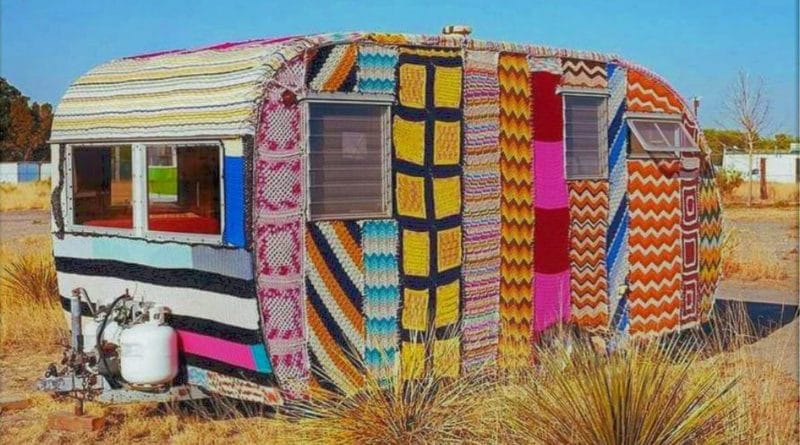Yarn Bombing – Note storiche
Play, participation, protest, creativity, sharing and much more is the movement called Yarn Bombing[1], now recognized as a form of Street Art expressed through the lining by hand, generally performed in knitting or crochet, of the most varied objects present in one public or private space. Those who adhere to this art are voices out of the chorus, artists, but also anonymous followers – mostly women – who throw bombs of colored yarns in the degraded and gray urban environment, with the aim of finding themselves and awakening the desire to joyfully create and create networks of solidarity2[2]. Yarn Bombing is related to the modalities of gender, race, social class and in some ways refers to the Pop Art movement, which aimed to blur the boundaries between “high” art and “low” culture [3], but also to the works of Christo and Jeanne -Claude [4], although much remains to be written about the movement.
The movement’s initiator, Magda Sayeg (Austin, Texas), says that in 2005 the thing she wanted most in the world was to have something warm, furry and human on the cold, gray door of her Houston boutique.Thus the alpha piece came to light: a small strip of pink and blue knitted sweater that Magda firmly applied to the door handle, without knowing that that action would change the course of her life5[5].
[1] Also known as “yarnbombing, wool bombing, yarn storming, guerrilla knitting, kniffiti, urban knitting, graffiti knitting”.
[2] This art favors the monumental dimension, soft yarns with bright and contrasting colors used with traditional crochet and knitting techniques.
[3] A historic artistic movement born in the United Kingdom and the United States between the mid and late 1950s that challenged traditional Fine Arts by including and enhancing images of popular and mass culture in the works (advertising, comics and banal objects, of daily use
[4] Christo Javašev (Gabrovo, June 13, 1935 – New York, May 31, 2020) and Jeanne-Claude Denat de Guillebon (Casablanca, June 13, 1935 – New York, November 18, 2009), artists among the greatest representatives of “Land Art”.
[5] See Magda Sayeg, TED talk, 2015 https://www.ted.com/talks/magda_sayeg_how_yarn_bombing_grew_into_a_worldwide_movement/transcript?language=en#t-37854
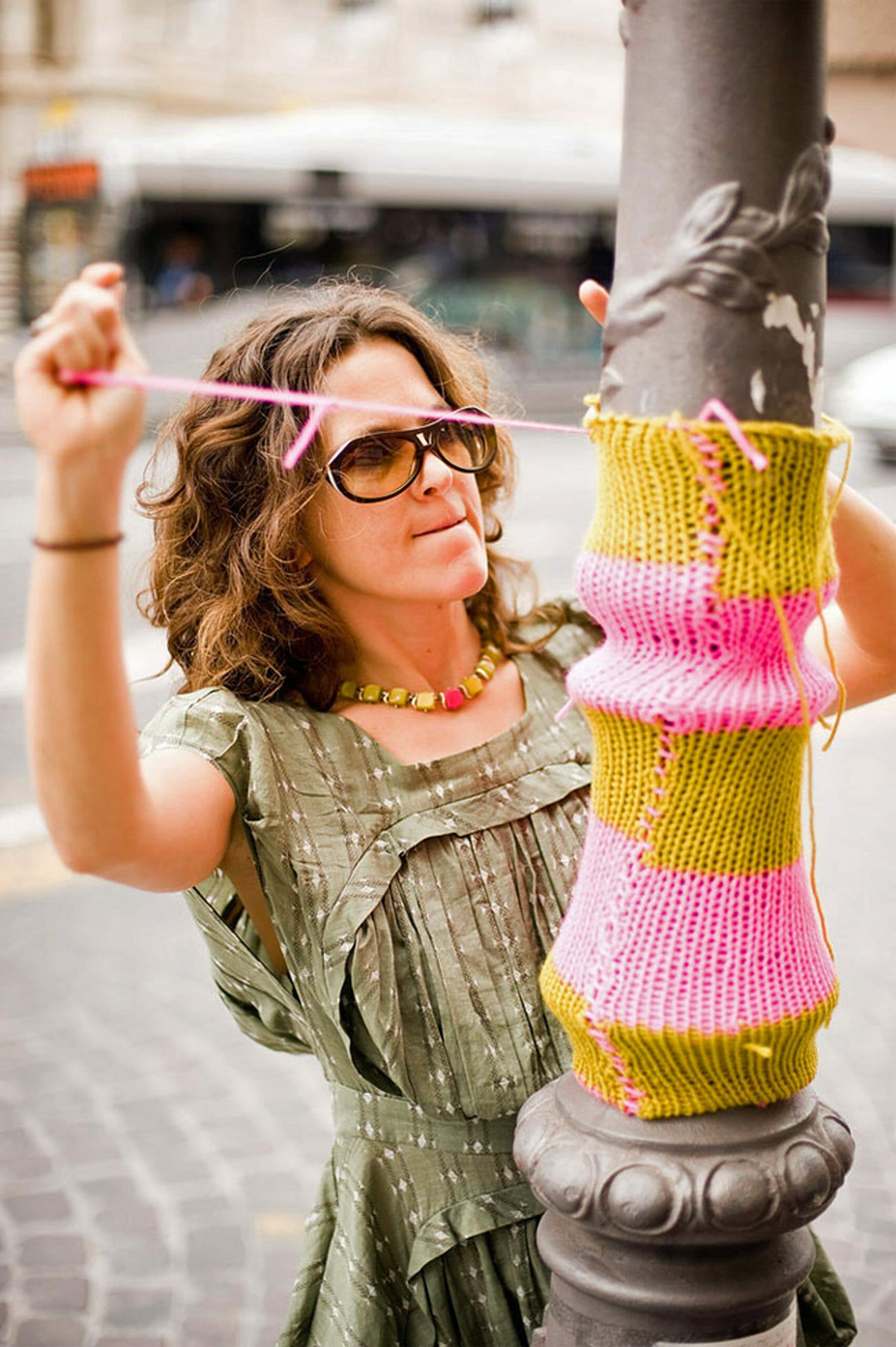
The pleasant reaction of the people who grabbed that handle encouraged Magda to free both her creativity and the need to do it with her hands, to re-create something unique with which to re-dress the most disparate objects.Magda continued on that road and covered the pole of a STOP sign: people would stop, look at it and have their photograph taken right next to the pole! Magda Sayed in one of her many interviews, says that she started knitting when she was 15 because she wanted to make a scarf for her boyfriend. She loved keeping her hands busy and hasn’t stopped since, still today she loves knitting when she is sitting in front of the TV or when she just needs to calm down and concentrate: knitting and crochet are her tranquilizers and they act on her better than a chamomile.
A historic artistic movement born in the United Kingdom and the United States between the mid and late 1950s that challenged traditional Fine Arts by including and enhancing images of popular and mass culture in the works (advertising, comics and banal objects, of daily use mass-produced).
Interest grew and Magda founded Knitta Please in Houston. In 2007 the group had eleven members and was made up of the precursor artists of “knitted graffiti”, but later, for various reasons, the “gang” broke up. Despite this, a dozen groups followed Knitta’s example, bringing their art throughout the United States and around the world [1].
Dan, Magda’s husband, was her first installer, for example he helped her in one of her most famous works: the double-decker bus entirely covered with crocheted and knitted squares that created so much anxiety to the artist, worried about not being able to complete her project. The work certainly did not go unnoticed on the streets of Mexico City, thus justifying the four days of hard work and the help of four or six adults![2]
[1] Cfr. https://en.wikipedia.org/wiki/Knitta_Please
[2] Cfr. https://www.dumbofeather.com/conversations/magda-sayeg-is-a-badass-yarn-bomber/
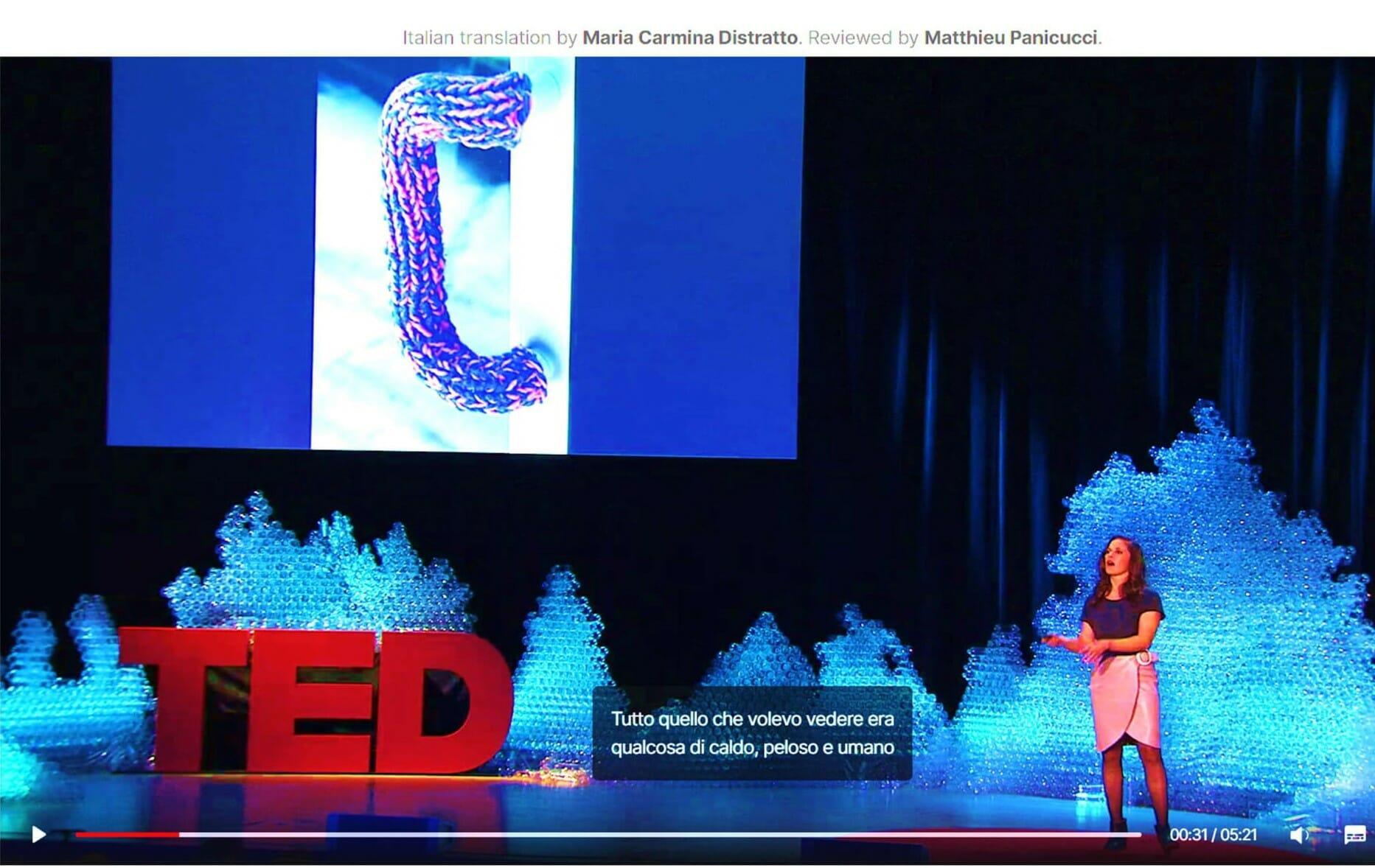
The New York Times and other important newspapers published articles on Magda Sayed, Yarn Bombing Art spreads quickly, thanks also to the announcements of the BBC, social networks and the internet, and becomes a global phenomenon without ever losing its original spontaneity!
Considering the amount of yarn [1] and work that the installations require, it is easy to imagine that the works are necessarily collective works, made by many hands of friends and sympathizers who, however, initially wished to remain anonymous for fear of exposing themselves and being considered almost in the same way of vandals.One often wonders if Yarn Bombing is legal, the answer is: YES and NOT … This art, which for the most part is meant to materialize into a non-permanent art installation, is generally allowed, but like Street Art, it can be removed by the competent Public Security authority if practiced without permission in public or private areas.
Yarn Bombing lands in Europe in 2009, when a group of street artists founded Knit the City in London. The collective intertwines elements of craftsmanship, domesticity, art, feminism, post-feminism, and is considered the first to go beyond the simple “cosies’[2] of the first knitted graffiti to tell “stitched stories” where “amigurumi” creatures and objects are used. (small animals or anthropomorphized creatures, attributable to Japanese art, crocheted or knitted).
[1] Many people wish to be involved in Magda’s artistic activities, even if only by donating yarns; important organizations, such as the National Yarn Council (NYC) are interested in the movement.
[2] A word that indicates household items, such as the tea towel that is used to keep tea warm.
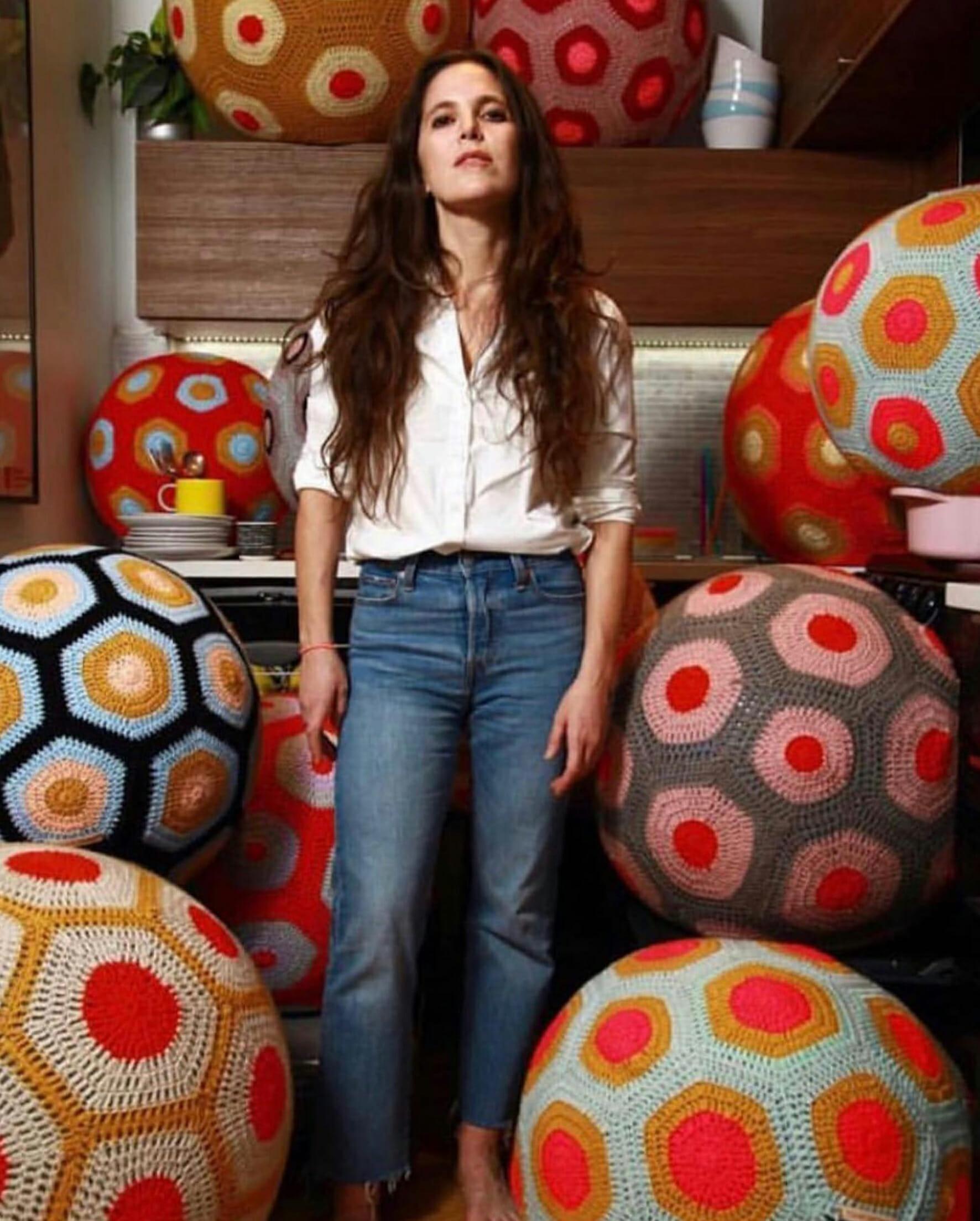
The event proposed a reflection on the joie di vivre, understood as the rediscovery of the small aspects of daily life, where “luxury” is time, space, nature[1]. In the urban environment, strongly marked by industrialization and digitization, man, trapped in fixed, frenetic and forced patterns, is hardly able to enjoy the beauty of the shapes of a tree or imagine a different facade of a building.[2]
Again in Italy, in 2012, the event Mettiamoci una pezza, held in L’Aquila three years after the earthquake that devastated the city, was emblematic of the political and social value of this art and constituted a moment of reflection on reconstruction. of the city. For the occasion, collection centers for yarns and pieces have been set up, many people have been involved and have given their contribution, even if only on a symbolic level[3].
[1] Cfr. https://www.sentieridigitali.it/marketing/a-roma-il-festival-il-lusso-essenziale-la-straordinarieta-del-quotidiano/
[2] In some ways, Yarn Bombing recalls the interventions in the field of environmental protection made by Friedrich Stowasser (15 December 1928 – 19 February 2000), better known under the pseudonym Friedensreich Regentag Dunkelbunt Hu§ = CPdertwasser, Austrian visual artist and architect
[3] Farinosi, Manuela; Fortunati, Leopoldina (April 2018). “Knitting Feminist Politics: Exploring a Yarn-Bombing Performance in a Post disaster City”. Journal of Communication Inquir.
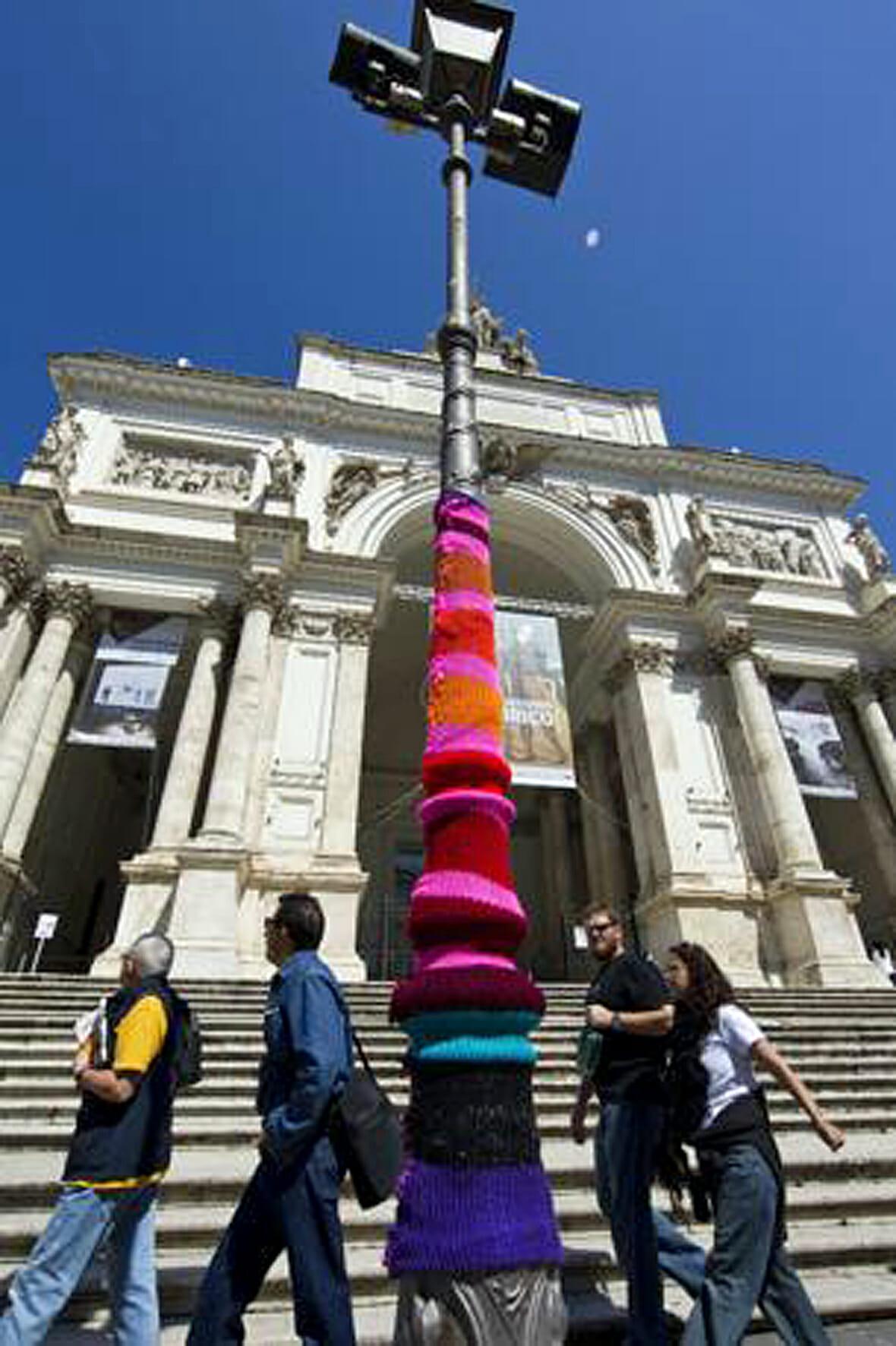
In 2020, the Back to nature project, curated by Costantino D’Orazio, transforms the Villa Borgese Park in Rome into an art gallery. The event solicits in-depth evaluations on the concept of man / urban space / nature and hosts, among other things, the intervention in the Parco dei Daini of Villa Borghese, of twenty-five tricoteuse of the Aracne Academy that in two months of work cover the trunks and branches of the large holm oaks and other trees that populate the Park[1]. One wonders if these works of art are ephemeral or hold up well over time. In many cases, atmospheric events (pollution, humidity) can change their appearance or make them disappear: the intertwining slowly fades, the colors fade and become gray.Much depends on the materials chosen and the environmental conditions. For example, wool can change its appearance, because it hardens and felts in the rain, but this does not mean that work always becomes waste to be thrown away.
[1] Cfr. Barbara Pavan, in https://www.artemorbida.com/yarn-bombing-a-villa-borghese/
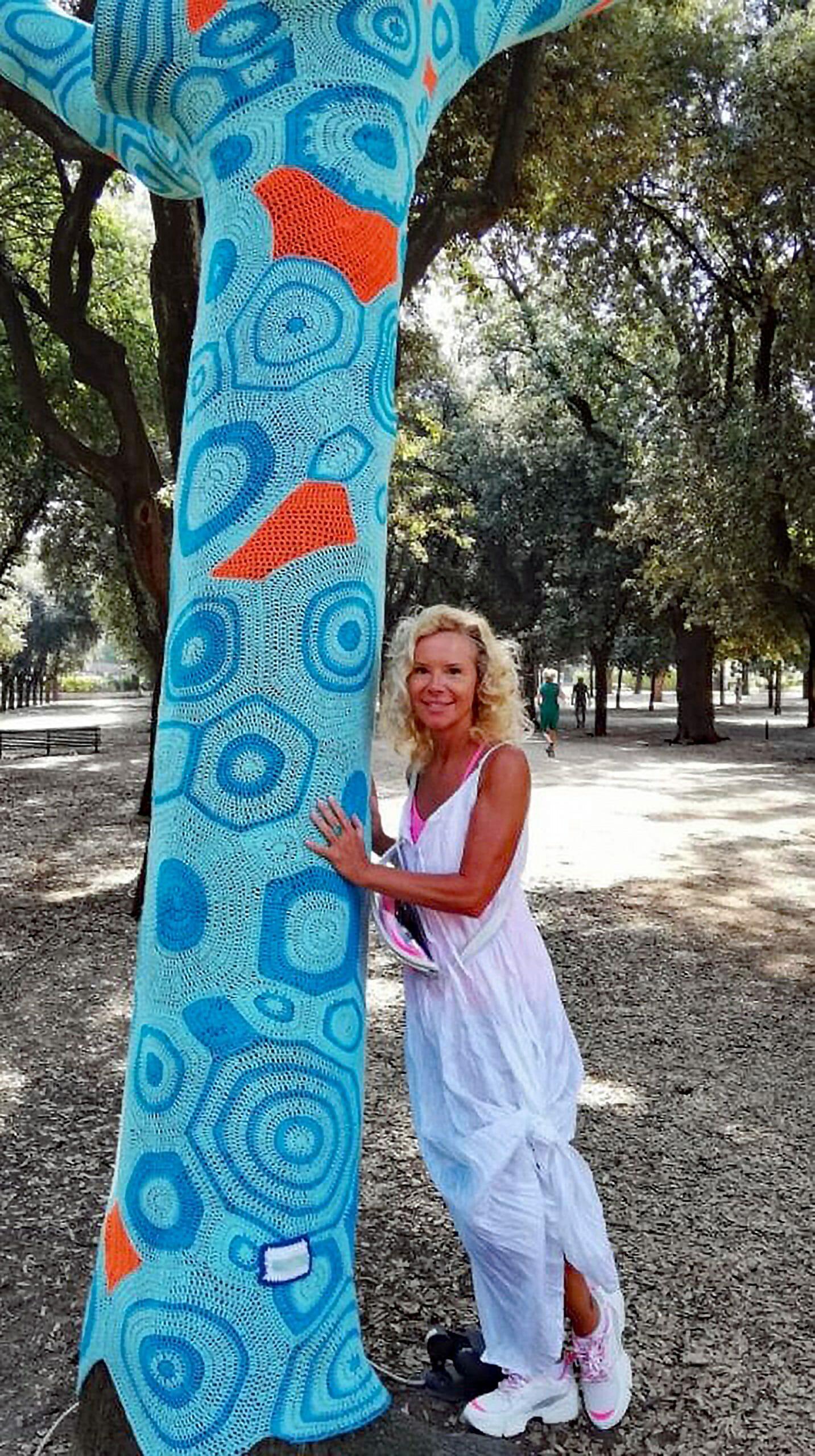
Make the World Warm Fuzzy, is one of the most significant slogans of the Yarn Bombing movement, it emphasizes the desire for human warmth and suggests the traditional Canadian blankets called Keep Me Warm One Night[1].These blankets, with complex and beautiful traditional designs, were hand-woven with skill and love to celebrate important events, such as a wedding or the birth of a child, they warmed the hard life of the pioneers who in the 19th century left Europe in search for a better life in America bringing only a few personal effects to that country, but also, fortunately, their ancient knowledge of the trade[2].
Yarn Bombing is also related to the “do it yourself” movement and is a cheerful form of activism that can be interpreted as a wonderful and unexpected form of anarchy, a touch of unexpected chaos.
The productions of Yarn Bombing live from the first stitches that together with many infinite others create shapes and surfaces, are made to modify and modify themselves until they disappear, without losing the thread that from the past of the textile tradition unites them to us and marks a path towards a better future to underline the fact that art belongs to everyone!
[1] Harold B. Burnham and Dorothy K. Burnham, Keep Me Warm One Night: Early Handweaving in Eastern Canada, 1972, University of Toronto Press in cooperation with the Royal Ontario Museum.
[2] These productions served the same function as Quilts, traditional bed quilts made with the patchwork technique, which consists of sewing together geometric pieces of fabric (also recycled) to form patterns.

